30 years in Józsefváros
Between Astoria and Blaha Lujza Square, hundreds of thousands turn up every day on Rákóczi Road, yet perhaps only a few people know that there is a plaque near the Church of St. Roch in Gyulai Pál Street, which reads: “Jenő Cholnoky, a geographer and university professor lived in this house between 1920 and 1950".
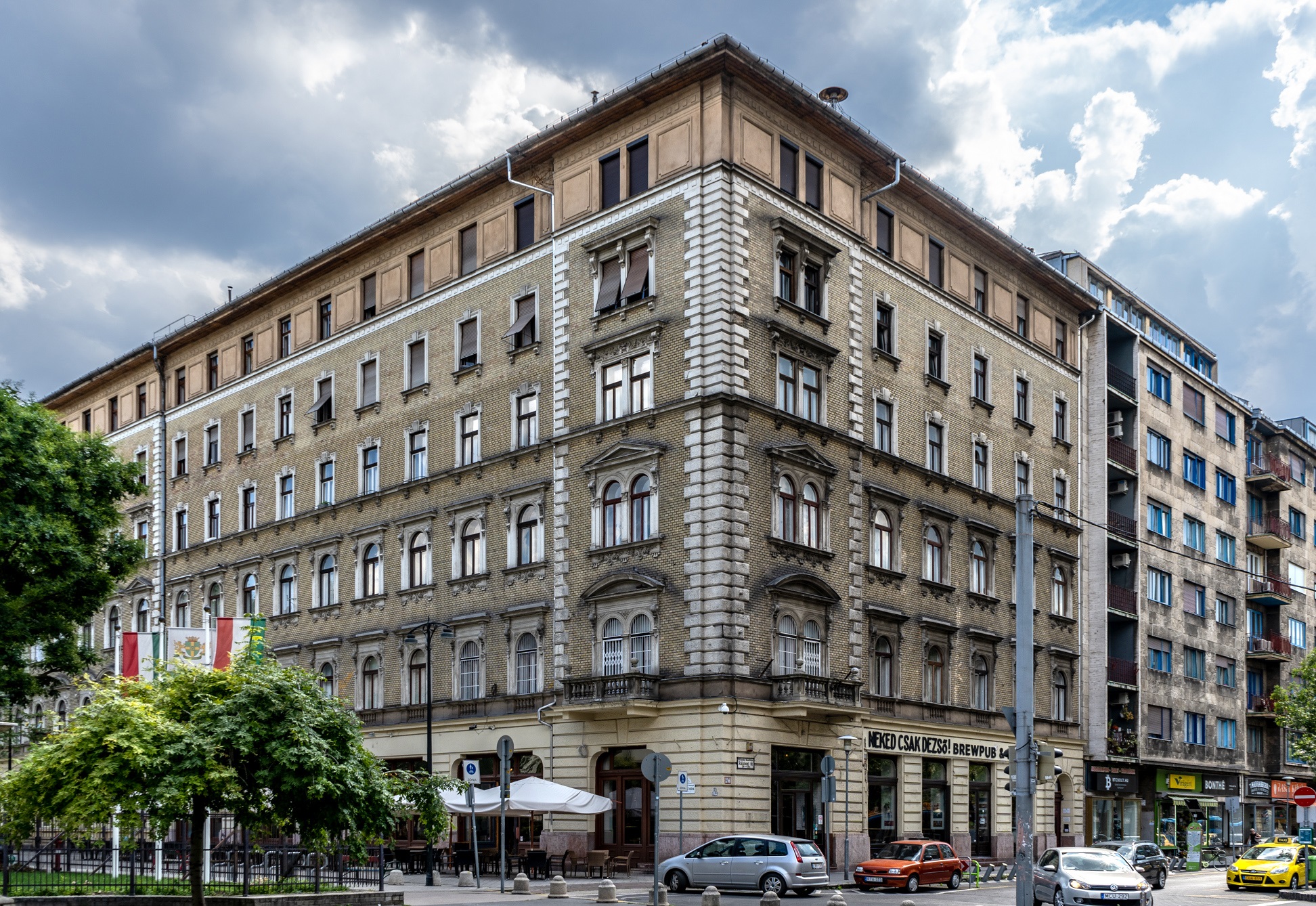
View from Rákóczi Road to 1 Gyulai Pál utca, where Jenő Cholnoky lived for 30 years (Photo: Balázs Both/pestbuda.hu)

One of the ornate balconies on the Gyulai Pál Street facade of the block (Photo: Balázs Both/pestbuda.hu)
The plaque was put up in 1993 by the Faculty of Science of Eötvös Loránd University, the Municipality of Budapest, and the Hungarian Geographical Museum. The marble plaque was made by a stonemason László Szilasi, which shows the portrait of Cholnoky created by the sculptor Béla Domonkos, which is a pair of the memorial plaque erected in 1988 in Balatonfüred.

Memorial plaque of Jenő Cholnoky on the right side of the entrance at 1 Gyulai Pál Street (Photo: Balázs Both/pestbuda.hu)

According to the descriptions, some windows of Cholnoky's second-floor apartment opened onto Stáhly Street (Photo: Balázs Both/pestbuda.hu)

The six-storey building was renovated in 2015, and the inner courtyard was also remodelled (Photo: Balázs Both/pestbuda.hu)
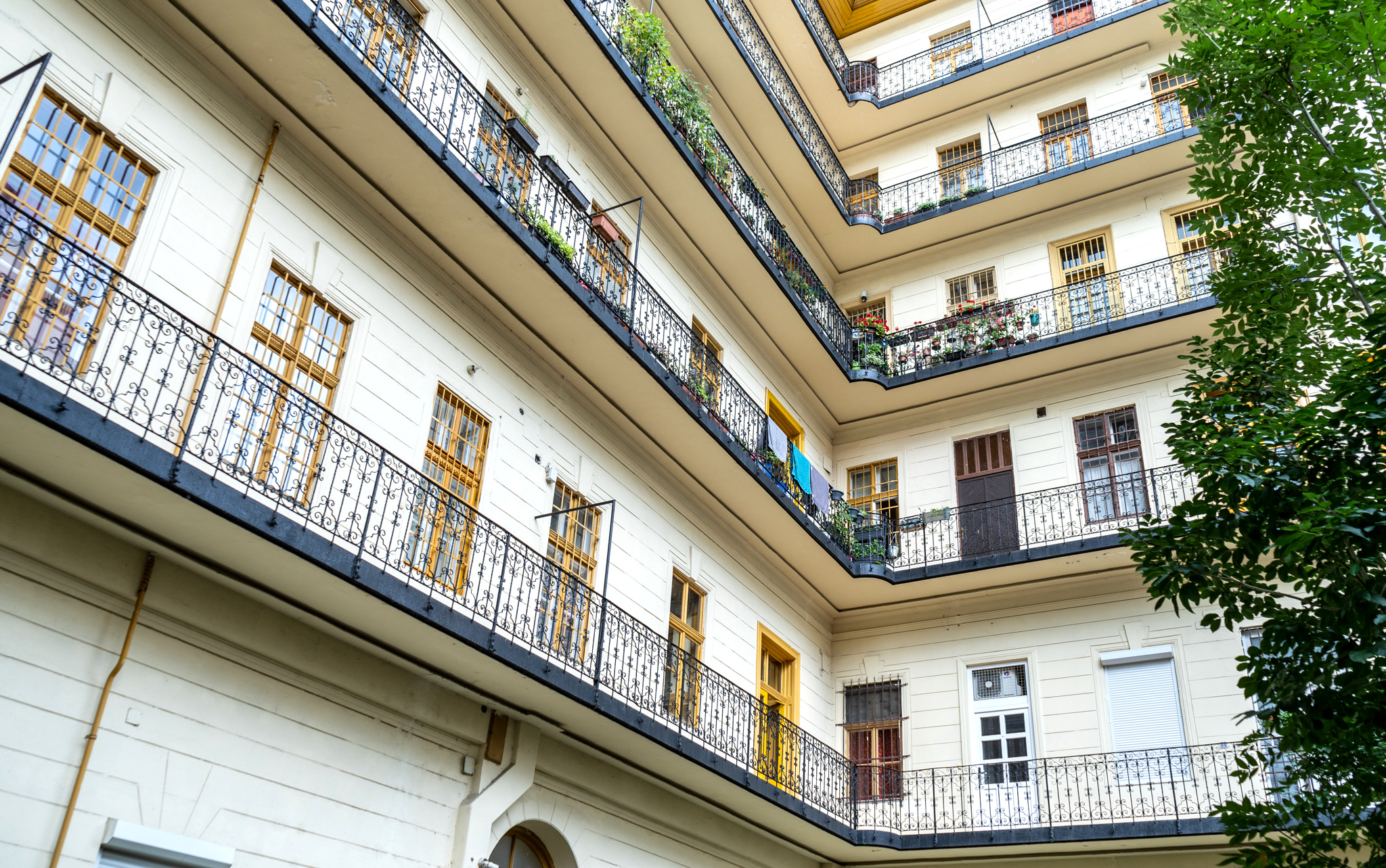
The renovated inner courtyard (Photo: Balázs Both/pestbuda.hu)
Dr Jenő Cholnoky was one of the last Hungarian scholars of the “heroic age” of geography, but he was represented in many sciences besides geography, as he was an engineer, photographer, and painter, so he was considered a real polymath. He was born in Veszprém on 23 July 1870 and then completed his university studies at the Budapest University of Technology. He obtained a degree in engineering in 1892. After that, he worked at the Department of Hydraulic Engineering of the University of Technology, and from 1894 at the ELTE Institute of Geography under the leadership of the famous Asian researcher Lajos Lóczy.
.jpg)
From left to right: Jenő Cholnoky, Lajos Lóczy and Károly Papp geologists [Source: Edit Lendvai Timár: Hungarian travellers, geographical explorers (Érd, 2009)]
He completed a huge oeuvre. During his active work of about half a century, more than fifty volumes of books and more than seven hundred scientific and educational articles can be linked to his name. The photo was taken in the apartment at 1 Gyulai Pál Street, where he stands in front of a shelf lining up his works and articles in 1940 (after which he wrote for another 10 years). The most productive period of his life can be connected to this apartment.
 Cholnoky’s Works: His major standalone works in the middle row of the bookcase; on the top shelf are the collected works in which he wrote certain parts; in the bottom row are a collection of his articles (Source: A földgömb, December 1940)
Cholnoky’s Works: His major standalone works in the middle row of the bookcase; on the top shelf are the collected works in which he wrote certain parts; in the bottom row are a collection of his articles (Source: A földgömb, December 1940)
 Budapest 8th District, 1 Gyulai Pál Street, 2nd floor, 5th door - home of geographer Jenő Cholnoky in 1939 (Photo: Tamás Cholnoky/Fortepan)
Budapest 8th District, 1 Gyulai Pál Street, 2nd floor, 5th door - home of geographer Jenő Cholnoky in 1939 (Photo: Tamás Cholnoky/Fortepan)

Jenő Cholnoky in front of his library in the study of his apartment on Gyulai Pál Street, 1929 (Source: Földrajzi Múzeumi Tanulmányok 18/2009.)
Expedition to China, the country of dragons
Because of his teacher, he embarked on the greatest adventure of his life in 1896, when he studied the delta region of the great rivers of the North China Plain. This journey brought Cholnoky real success and international recognition. He toured the Mongol steppes and the Yellow River branch along the Great Wall of China. He walked more than 6,000 kilometres and worked tirelessly, taking notes and making maps on the way. As a sharp-eyed observer, he recorded many beauties in his diary, but he also studied the multifaceted relationship between landscape and man.

Chow-Yong-Xiang, a faithful Chinese soldier of Cholnoky who accompanied him during his travels (Source: Vasárnapi Ujság, 24 June 1900)

Sketches of Chinese gates in Cholnoky's East Asian Travel Diary (Source: Földrajzi Múzeumi Tanulmányok 1/1985)
He immortalized the masterpieces of Chinese bamboo architecture, the equipment and tools of irrigation farming in real artistic drawings, and observed the work of gold washers, but also ventured underground into the mines if necessary. His drawings and cross-sections of extinct volcanoes, fearsome gorges, the characteristics of granite and basalt are unmatched. Jenő Cholnoky's attention was not escaped by the lives of the peoples living in the visited areas either. He explored areas unknown to geography, and his descriptions and remarks are still captivating readings. His book 'From the Land of Dragons' was a well-deserved success, laying the groundwork for his later high-profile scientific career.
%20-%20Vas%C3%A1rnapi%20Ujs%C3%A1g%201900%20j%C3%BAnius%2024..jpg)
Station on the Beijing–Tianjin Railway, which was destroyed by the Boxer Rebellion, photographed by Jenő Cholnoky (Source: Vasárnapi Ujság, 24 June 1900)
 The Main Street in Beijing - view from the city walls during Cholnoky's travel (Source: Vasárnapi Ujság, 24 June 1900)
The Main Street in Beijing - view from the city walls during Cholnoky's travel (Source: Vasárnapi Ujság, 24 June 1900)

'From the Land of Dragons' was completed as early as 1900, the book shown in a later published edition gilded, richly illustrated with ornate, intertextual, and full-page images (Source: regikonyvek.hu)
His apartments in Budapest
Upon his return, he held various positions with the Geological Society and the Geographical Society. He lived in several places in Budapest. At first, in 1899, he lived in the house at 23 Garay Street in the 7th District, then in apartment No. 12 on the 3rd floor of the house under 41 Elemér Street (today's Marek József Street), but according to the descriptions he also lived in the current Wesselényi Street and on Thököly Road.
He then moved to Kolozsvár, Transylvania (today's Cluj-Napoca, Romania), from where he was eventually expelled by the Romanian state in 1919 due to World War I, as a result of which he settled in Gyulai Pál Street, where he lived for 30 years until his death.

The Cholnoky Brothers in the house at 23 Garay Street, from the left Jenő Cholnoky, Ferenc Cholnoky, Kornél Zelovich and his son in front, and László Cholnoky (Photo: Tamás Cholnoky/Fortepan)

23 Garay Street today with the same railings and columns (Photo: Balázs Both/pestbuda.hu)
.jpg)
23 Garay Street from the outside, where Cholnoky lived for a few years (Photo: Balázs Both/pestbuda.hu)
%20utca%2041.%20III.%20em.%2C%20Cholnoky%20Jen%C5%91%20%C3%A9s%20fia%20B%C3%A9la..jpg)
On the 3rd floor of 41 Marek József (then Elemér) Street in 1901, Jenő Cholnoky and his son, Béla (Photo: Tamás Cholnoky/Fortepan)
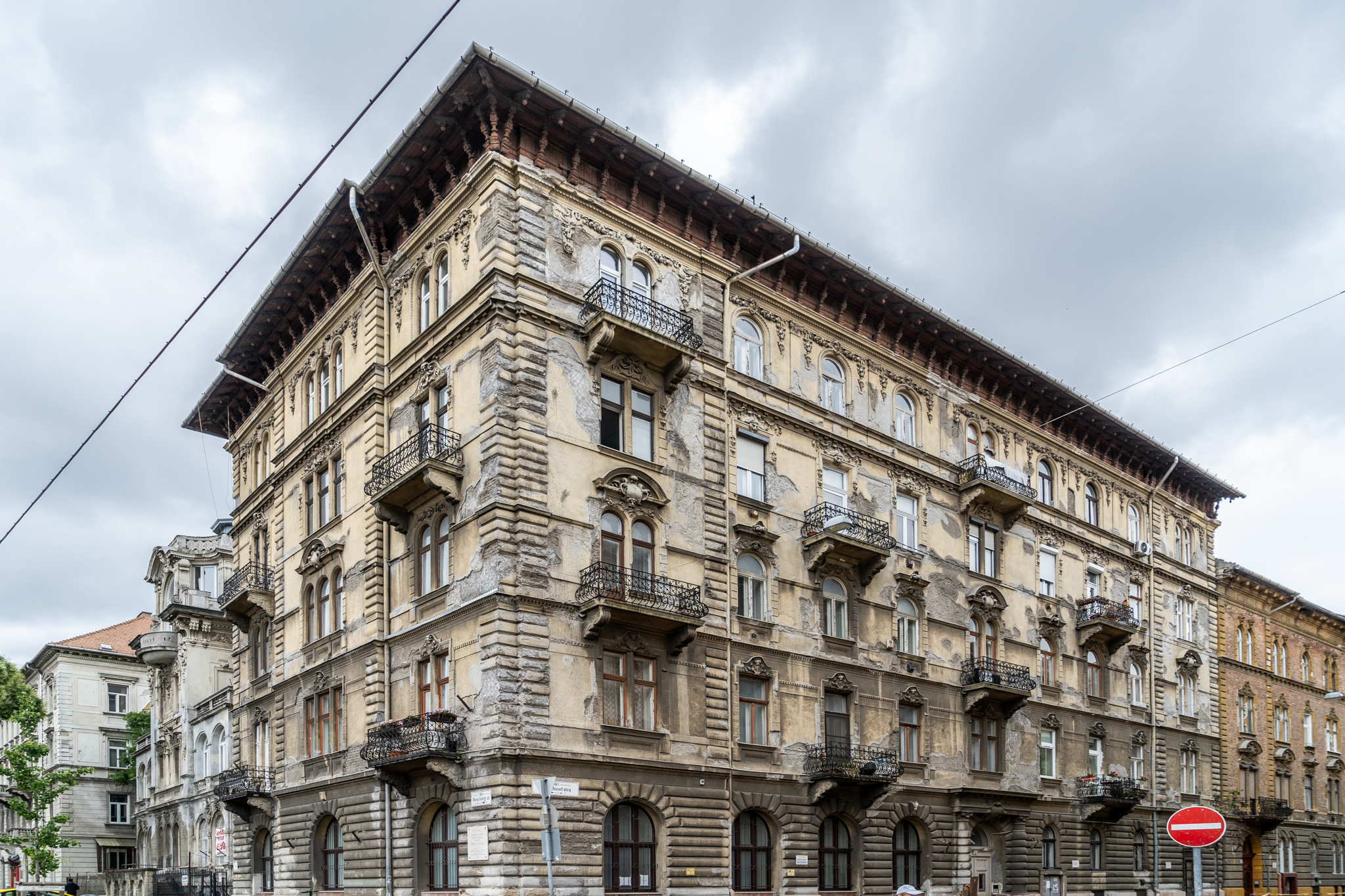
The exterior of the house under 41 Marek József Street today (Photo: Balázs Both/pestbuda.hu)
Scientist, explorer, engineer, artist, teacher
It is almost impossible to list his positions, yet one or two important cornerstones of his life must be mentioned. He was not satisfied with writing and research, so he taught for more than three and a half decades, initially for 15 years at the Franz Joseph University in Cluj-Napoca, then between 1920 and 1940 at the University of Budapest (now ELTE).

One of the classrooms of the Pázmány Péter University (now ELTE) on Múzeum Boulevard, where Jenő Cholnoky is giving a lecture in 1930 (Photo: Tamás Cholnoky/Fortepan)
He was a corresponding member of the Hungarian Academy of Sciences from 1920, a deliberative member from 1949, a secretary of the Hungarian Geographical Society from 1898 to 1905, then a general secretary until 1914, and from then until 1944, the president. He was also the president of the Hungarian Cave Research Society, the Hungarian Tourist Association, and the Hungarian Tourist Society.

At the entrance of the Hungarian Academy of Sciences on the closing day of the 50th-anniversary meeting of the Hungarian Geographical Society on 7 May 1922, on the left Pál Teleki (later Prime Minister), in the middle Archduke Joseph Francis (son of Archduke Joseph August and Princess Auguste of Bavaria), next to him in Hungarian gala dress Jenő Cholnoky (Photo: Tamás Cholnoky/Fortepan)

Jenő Cholnoky, a geographer, gives a lecture in the reading room of the Hungarian Academy of Sciences in 1925 (Photo: Tamás Cholnoky/Fortepan)
As he travelled almost all over the world during his scientific journeys, he was elected an honorary member of many foreign societies and Hungarian ones. In 1930, he was elected a regular member of the Royal Geographical Society of England and then of the Austrian Geographical Society, while he became a corresponding member of the Italian and Serbian Geographical Societies.
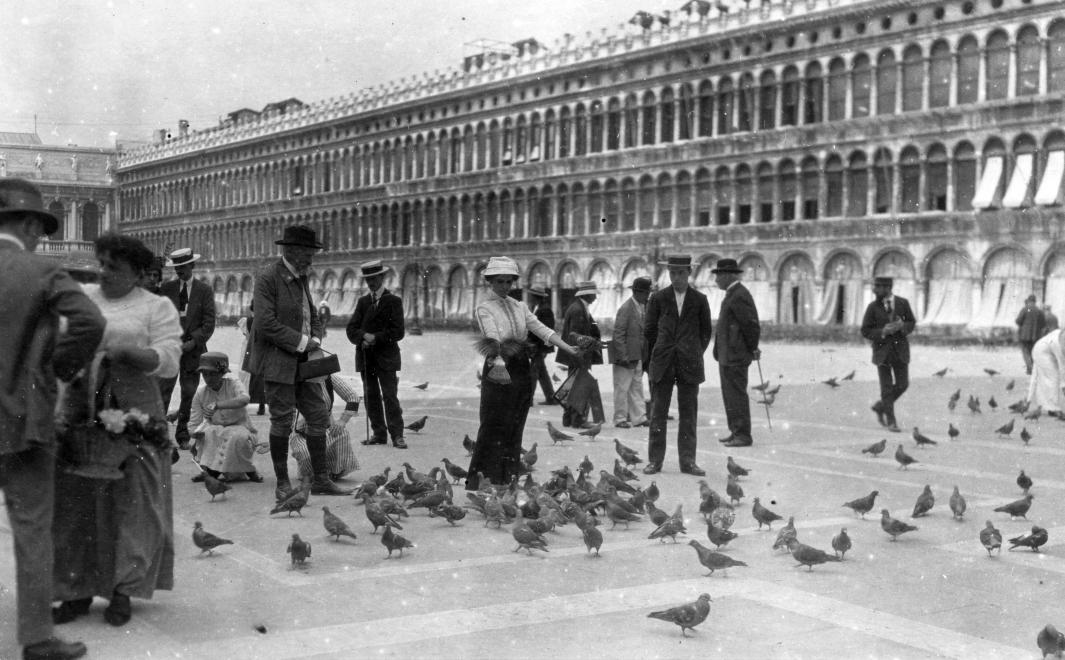
Venice, St. Mark's Square, The Procurator's Palace - Jenő Cholnoky, geographer in breeches in 1911 (Photo: Tamás Cholnoky/Fortepan)
He had vast knowledge and knew almost the whole country well, but perhaps Lake Balaton was the closest to him. This is not a coincidence, as his career began with the exploration of Lake Balaton, to which he later returned several times, and several of his works examine it. One of Cholnoky’s famous thoughts on Lake Balaton: “What is the value of the lunar landscape if there is no golden bridge under the Moon that's light is not shining along the waves; what is the mountain worth if it is not reflected in the light of the quiet lake, and what is the view worth if its border is not increased to a giant by the infinite, always beautiful, always changing Lake Balaton.”

The title page of the Balaton Szemle, which was edited by Jenő Cholnoky as well (Source: adtplus.arcanum.hu)

Jenő Cholnoky's Balaton appeared in the Library of the Hungarian Geographical Society series in 1937, published by the Franklin Company, which contains 120 intertextual, subtitled images and nearly 80 relevant, subtitled illustrated images (Source: regikonyvek.hu)
He also spoke in a colourful, understandable way about serious scientific issues, so in the 1930s and 1940s, people loved the educational lectures he often held with screenings in the Urania National Film Theater. Later, the horrors of World War II, unfortunately, did not avoid him either, as he lost his wife during the conflict. After the war, however, he remarried, marrying Jolán Vadas, who took care of him until his death on 5 July 1950. The memory of his scientific work is preserved in the Hungarian Geographical Museum in Érd.

Jenő Cholnoky in 1942 (Photo: Tamás Cholnoky/Fortepan)
If someone is passing Cholnoky's former apartment, or if they are visiting the "Hungarian Sea" in the great heat, it is worth remembering for half a moment about Cholnoky, one of the greatest Hungarian scholars, who gained many glories for Hungarian geography with his fruitful activity, and whose work also stands out among international scholars.
Cover photo: Entrance of 1 Gyulai Pál Street, on the right side the memorial plaque of Jenő Cholnoky (Photo: Balázs Both/pestbuda.hu)

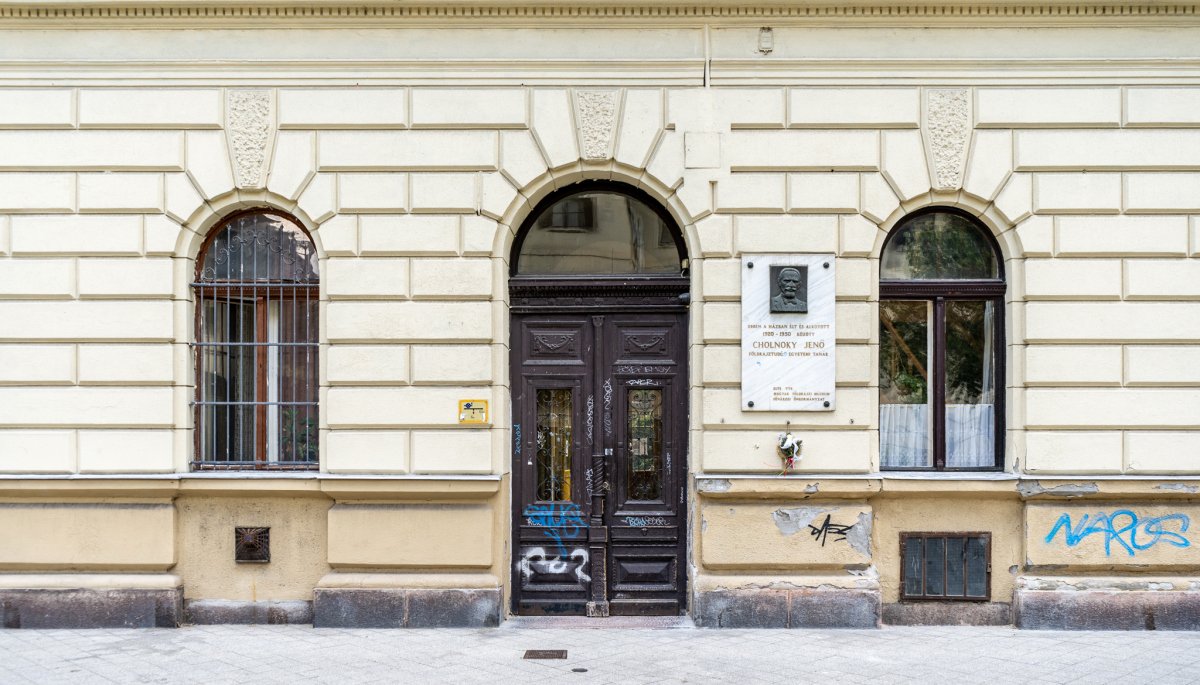



































Hozzászólások
Log in or register to comment!
Login Registration